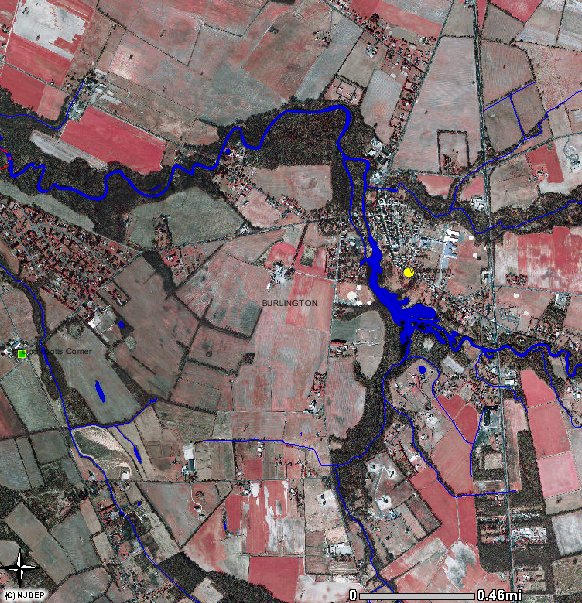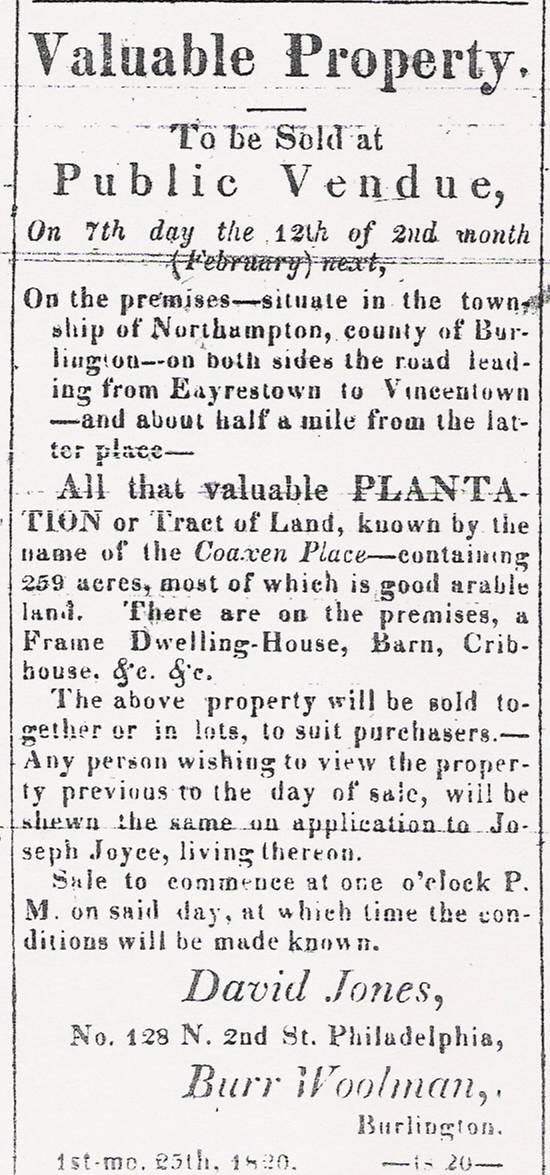|
|
 |
|

|
| Area of Weekping/Coaxen, west of Vincentown, Burlington County, NJ |

The Loss of Indian Title to Weekping
or how Commissioner Foster took possession
Coaxen was an ancient Indian settlement on fertile soil watered by the Rancocas and Coaxen streams. Fearing that
false claims would be made by unscupulous settlers, John Wills deliberately set aside the Coaxen settlement by deed to the
local sachem, .
Josiah Foster, Indian Commissioner, local judge, and well-connected politician was the principal source of contact with
the Euro-American world of New Jersey for the Indian community residing at both Brotherton and Coaxen. Despite legal
claims made by Foster to rationalize his action in taking over Coaxen, the Indian community at Brotherton included the Coaxen
families. As early as 1758, one of the Indian groups present at the Treaty of Easton (which acknowledged the primary
extinquishment of Indian claims to most of New Jersey, and created the Brotherton Reservation in exhange) were Robert Kekott
(Skikkit), Jacob Mulis and Samuel Gosling. From several documents, the Mulis family is confirmed as being members of
the ruling council at Brotherton (Feb. 20, 1781 letter from Brotherton to Gov. Wm. Livingston - see under Robert Skikkit page)
.
|
 |
|
Last Letter Regarding Foster's Success in Court:
Philed. 10 mo 11 1819
Dear Grandfather
I returned from Burlington on seventh day considerably indisposed [the author of this letter
wrote a congratulatory letter on October 7th], and have been confined to the house which has prevented me from seeing thee
as I had intended. Burr [Woolman] and myself went to see the celebrated Coaxen plantation, on 6th day last, we call'd
by invitation of Judge Budd, one of the Commissioners appointed by the Legislature in 1806, who politely accompanied us, and
shewed us the premises, and informed the people residing there that his authority had ceased: Burr however intends taking
formal possession to avoid further difficulty It is gratifying to find his disposition manifested to conciliate, and
I hope the righteous decision which has taken place respecting this long contested claim, will silence those
who have so industriously circulated groundless and unfavourable reputes
We were ageeably disappointed in the appearance of the Place - it is under pretty good cultivation
and the fences afre in better order than we had expected to find them - It is uncertain when I shall be able to go to Haddonfield,
The weather is pleasant - perhaps thee can come to Phillad. I should be very glad to see thee.
Hence affection [ ] Benj M Hollinshead
[to Josiah Foster, Haddonfield]
| February 1820 Ad for Coaxen Farm |

|
|
 |
|
|
 |
|
|
 |
|
|
|
|
American Indian Research
Email: AmericanIndianResearch@hotmail.com
|
|
|
 |

